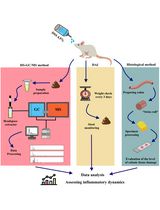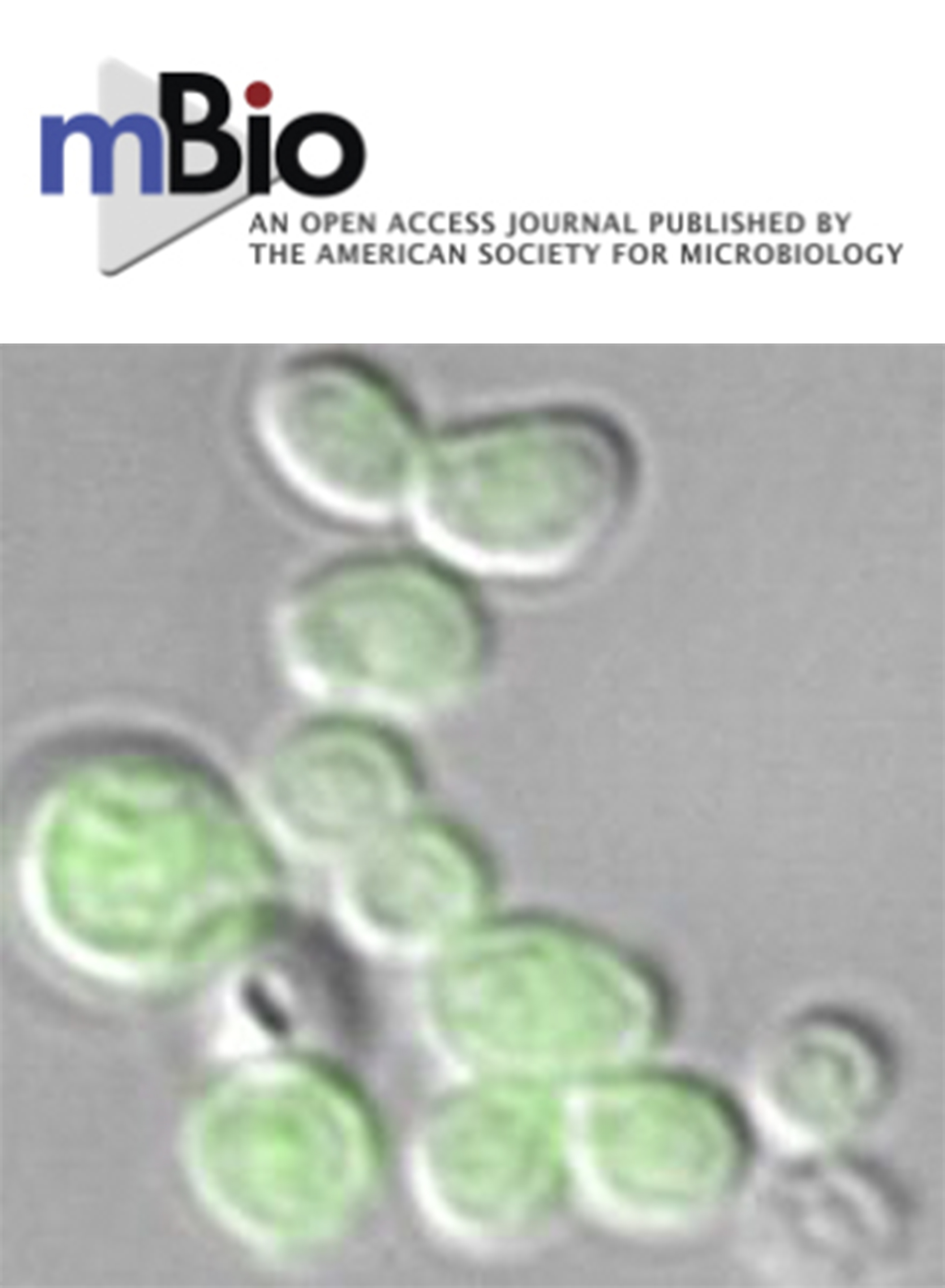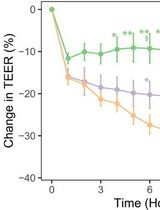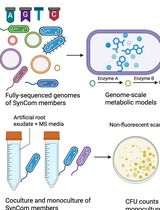- EN - English
- CN - 中文
Murine Acute Pneumonia Model of Pseudomonas aeruginosa Lung Infection
铜绿假单胞菌肺部感染的小鼠急性肺炎模型
发布: 2020年11月05日第10卷第21期 DOI: 10.21769/BioProtoc.3805 浏览次数: 4562
评审: Kristin L. ShinglerElena Jordana-LluchAyush Ranawade

相关实验方案

HS-GC-MS 方法用于 DSS 诱导性结肠炎模型中 IBD 动态变化的诊断
Olga Yu. Shagaleeva [...] Natalya B. Zakharzhevskaya
2025年03月20日 2990 阅读
Abstract
Animal infection models play significant roles in studying bacterial pathogenic mechanisms, host pathogen interaction as well as evaluating drug and vaccine efficacies. We have been utilizing an acute pneumonia model to study bacterial colonization in lungs and assess virulence to the host by determination of bacterial loads and survival assays, as well as examine the bacterial gene expression in vivo. Additionally, the host's immune response to the pathogen can be explored through this infection model.
Background
Acute pneumonia is defined as an acute infection of the lungs by microbial pathogens. Hospital-acquired pneumonia, in particular, is often caused by multi-drug resistant pathogens and is difficult to treat. Common bacteria that cause pneumonia are Pseudomonas aeruginosa, Streptococcus pneumoniae, group A Streptococcus, Acinetobacter baumannii, Klebsiella pneumoniae,Staphylococcus aureus and Mycoplasma pneumonia (Ravi Kumar et al., 2018 ). To develop effective prevention and treatment strategies, it is critical to understand how bacteria sense and adapt to host in vivo environment and counteract host immune clearance. Currently, there are three types of pneumonia models: One hit acute pneumonia model, Ventilator-associated pneumonia model, and Agar-bead pneumonia model (Bielen et al., 2017). The model mentioned in this article belongs to the one hit acute pneumonia model. There are two methods for the infection, one is to inject bacterial suspension directly into the trachea or lungs. Here, we reported the other method in which bacteria are inoculated through nostrils, which is relatively easy to perform.
P. aeruginosa is a Gram negative opportunistic pathogenic bacterium that causes a variety of acute and chronic infections in human. It is one of the major pathogens that cause lung infections in patients with cystic fibrosis, chronic obstructive pulmonary disease and compromised immunity (Talwalkar and Murray, 2016). To study the virulence factors and gene expression of P. aeruginosa in host, we utilized gene expression (Wu et al., 2012). Additionally, this model is suitable for examining the immune response of host (Tian et al., 2019). We have also applied this model to study the infections by K. pneumoniae and A. baumannii.
Materials and Reagents
Plastic EP tubes (1.5 ml, 2 ml, 4 ml, G SERVICEBIO, catalog numbers: EP-150-M , EP-200-M , EP-400-M )
Syringe (1 ml, Anhui JINHUAN Co., Ltd, catalog number: 14001 )
Pipette tips (20, 200, and 1,000 μl clear tips, Tianjin HUAXIN Co., Ltd, catalog number: HY130 )
Six-week-old female BALB/c mice (Beijing Vital River Laboratory Animal Technology Co., Ltd)
Bacterial culture (P. aeruginosa wild type strain PA14 [ Liberati et al., 2006 ])
75% ethanol (Tianjin Chemicals Co., Ltd, catalog number: A1022 ). Diluent: double distilled water.
7.5% chloral hydrate (Tianjin Chemicals Co., Ltd, catalog number: 2223 ). Diluent: double distilled water
0.05 M Ethylenediaminetetraacetic acid (EDTA) disodium salt solution, pH 8.0 (Beijing Dingguo Biotech Co., Ltd, catalog number: LE568-1KG ). Diluent: double distilled water
Carbon dioxide (Tianjin Baisida Co., Ltd, catalog number: N14 )
1% sterilized peptone (Oxiod Co., Ltd, catalog number: LP0037B ). Diluent: double distilled water.
Trizol (BioFroxx Co., Ltd, catalog number: 15596026 )
Isopropanol (Tianjin Chemicals Co., Ltd, catalog number: A1079 )
Chloroform (Tianjin Chemicals Co., Ltd, catalog number: A1008 )
Phosphate-buffered saline (PBS), pH 7.2 (see Recipes)
NaCl (Invitrogen, catalog number: 24740011 )
KCl (Aladdin, catalog number: P112134-12×500g)
Na2HPO4·7H2O (Tianjin Chemicals catalog number: W2007)
KH2PO4 (Macklin, catalog number: M822553-100g)
LB broth (see Recipes)
NaCl (Invitrogen, catalog number: 24740011 )
Tryptone (Abbexa, catalog number: abx082523-500g )
Yeast extract (Abbexa, catalog number: abx082370-500g )
Equipment
Pipette (GILSON, catalog number: F167350 )
Incubator (Shanghai Yihen Co., Ltd, catalog number: 2005A )
-80 °C freezer
Centrifuge (Eppendorf, model: 5810 )
Vortex (BioExpress, GeneMate, catalog number: S-3200-1 )
Spectrophotometer (BIORAD, model: Smart Spec plus )
Surgical scissors
Fine Forceps
I.V. Catheter (BD, model: Angiocath 1.3 x 48 mm )
Electronic homogenizer (Shanghai JIANLI Co., Ltd, catalog number: e76 )
Software
GraphPad
Procedure
文章信息
版权信息
© 2020 The Authors; exclusive licensee Bio-protocol LLC.
如何引用
Pan, X. and Wu, W. (2020). Murine Acute Pneumonia Model of Pseudomonas aeruginosa Lung Infection. Bio-protocol 10(21): e3805. DOI: 10.21769/BioProtoc.3805.
分类
微生物学 > 体内实验模型 > 细菌
微生物学 > 微生物-宿主相互作用 > 细菌
您对这篇实验方法有问题吗?
在此处发布您的问题,我们将邀请本文作者来回答。同时,我们会将您的问题发布到Bio-protocol Exchange,以便寻求社区成员的帮助。
Share
Bluesky
X
Copy link










